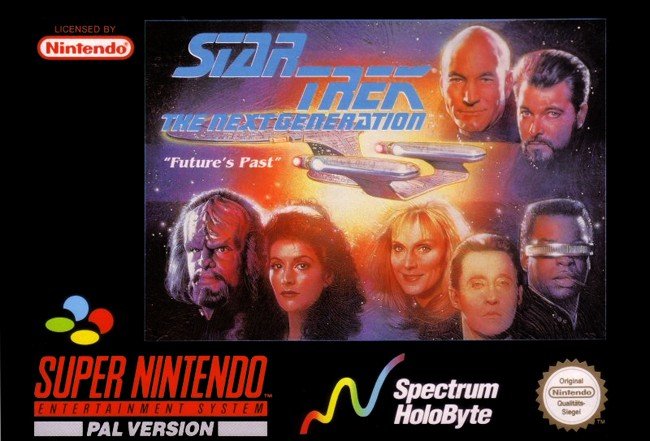

- #SNES STAR TREK GAMES FULL#
- #SNES STAR TREK GAMES CODE#
- #SNES STAR TREK GAMES PC#
Featured in the console version averted in the PC version. #SNES STAR TREK GAMES CODE#
In a subversion, it is possible to win in both editions, via a cheat code in the console versions, and making exactly the right story choices in the PC version.
Failure Is the Only Option: At some point in each version of the game (the very end of the console version, and about halfway through the PC version), you are forced to play through the famed no-win Kobayashi Maru simulation.  Damage Control: One of the game mechanics allows you to divert repair teams to prioritize different bits of Subsystem Damage.
Damage Control: One of the game mechanics allows you to divert repair teams to prioritize different bits of Subsystem Damage.  The Computer Is a Cheating Bastard: In both versions, the Kobayashi Maru simulation will keep spawning Klingon ships until you eventually get destroyed, thus technically also making this an in-universe example. This may be an Acceptable Break from Reality, since few would want to fly a starship that moves realistically. In the same vein, the fact that starships handle basically like airplanes in their ability to change direction.
The Computer Is a Cheating Bastard: In both versions, the Kobayashi Maru simulation will keep spawning Klingon ships until you eventually get destroyed, thus technically also making this an in-universe example. This may be an Acceptable Break from Reality, since few would want to fly a starship that moves realistically. In the same vein, the fact that starships handle basically like airplanes in their ability to change direction. #SNES STAR TREK GAMES FULL#
This can lead to trouble since enemy ships are likewise afflicted you'll be in close pursuit, shoot them, and then crash into them since you were going full speed and they stopped with about a picosecond for you to notice and swerve.
If your impulse engines are knocked out, you will stop instantly instead of, you know, continuing with the same velocity for eternity or until an outside force changes it. An expansion pack, Chekov's Lost Missions, was released the following year. There were a lot of similarities between this game and its console forerunner (the character names were mostly the same, for instance), though it was quite different structurally. Moreover, it included live action cutscenes with several Star Trek actors (including William Shatner, George Takei and Walter Koenig) playing their characters. This game, released at the dawn of the 3D Acceleration era, featured much improved graphics and far better space battles. The second and more renowned version was released for the PC in 1997. Neither version set the world alight in terms of sales however, and the console version was soon forgotten. On the former system it was moderately well received and quite a technologically advanced game for the SNES, while the Sega 32X version was a bit less well-regarded due to some control issues, and being a slightly less impressive title by the standards of that system. The first game was released in 1994 for the Super Nintendo Entertainment System and the Sega 32X. It culminates in the IFD Trials, three tests undertaken by representatives of any races that are present when the Trials are held, and failure would mean the destruction of the Federation and the enslavement of countless worlds by the Federation's enemies.īoth the Sega and Nintendo games feature largely identical gameplay, but with some key differences between versions.There have been two games bearing the name Star Trek: Starfleet Academy, both by Interplay Entertainment. It takes place in the Star Trek universe, spanning Federation space and the Romulan Neutral Zone, and centers around the appearance of the IFD (Integrated Field Derandomizer), an artifact machine of unknown origin that, as its name suggests, allows its user to reshape matter and energy. 
The game was released for the Super Nintendo Entertainment System, the Sega Genesis and the Sega Game Gear. Star Trek: The Next Generation: Future's Past (Star Trek: The Next Generation: Echoes from the Past on Sega) is a 1994 adventure game featuring strategy and puzzle-solving elements.








 0 kommentar(er)
0 kommentar(er)
